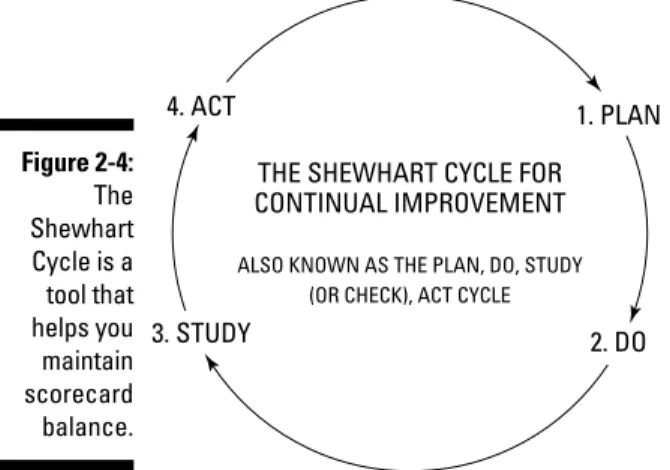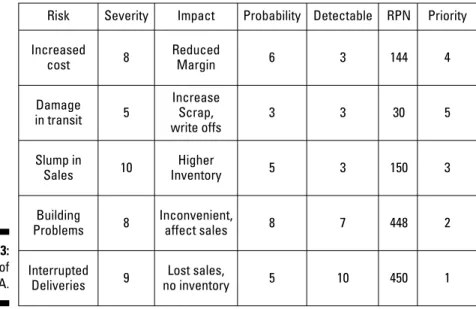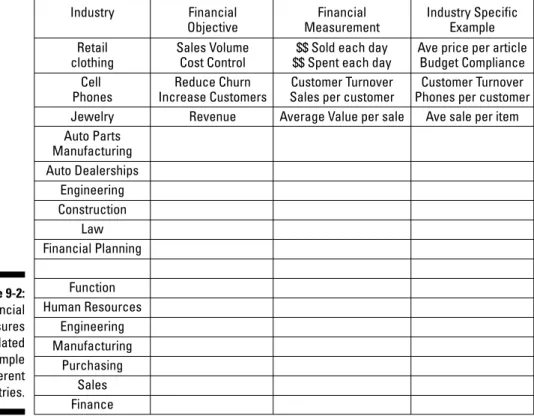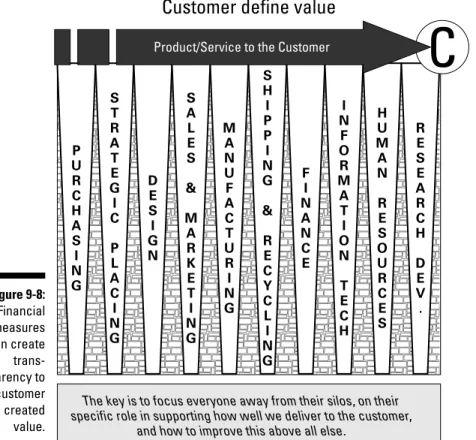LIMITATION OF LIABILITY/DISCLAIMER OF WARRANTY: THE PUBLISHER AND THE AUTHOR MAKE NO REPRESENTATIONS OR WARRANTIES AS TO THE ACCURACY OR COMPLETENESS OF THE CONTENT OF THIS WORK AND SPECIFICALLY DISCLAIM ANY AND ALL WARRANTIES, INCLUDING, BUT NOT LIMITED TO, WARRANTIES OF FITNESS FOR A PARTICULAR PURPOSE . As a business consultant, Chuck has consulted with many of the Fortune 100 companies and is recognized around the world for his work in Balanced Scorecards, Six Sigma, Lean Manufacturing, Business Process Reengineering and Project Management.
Introduction
We wrote this book to make learning easier, so you don't have to learn the hard way. We've written this book so that you can easily find information and easily understand what you find.
The ABC’s of Balanced Scorecard
For example, we assumed that you are a manager, executive or other business leader who is motivated to discover some new approaches to improve your organization's processes and improve its bottom line. We have also assumed that you are ready, willing and able to commit yourself to making your organization more efficient and effective, and to helping others do the same.
The Customer — The Critical Leg
Financial Measurement — The Foundation LegThe Foundation Leg
Internal Business Processes — The Value Creation LegThe Value Creation Leg
The Part of Tens
The ABC’s of Balanced
A basic understanding of the four Balanced Scorecard legs—the customer side, the financial leg, the internal business process leg, and the knowledge and growth leg—is the first step in establishing your Balanced Scorecard strategy for your organization. After covering the basics, we consider the best approaches to understand your needs and plan for implementing your own balanced scorecards.
Goals, Scores, and the Balanced Scorecard
Goals, Scores, and the Balanced Scorecard
To do this, you must first find out who your customers are - inside and outside your organization - and who they will become. What is the state of technology and how will it affect your customers and your business.
Cracking the whip on nearsighted business practices
Shouldn't the first employee know what his internal customer wants from him so they can do their job with the least effort. The work provided to co-employees should not be suitable for use, just as you want your products to be suitable for the end users - the people who pay for what you do and pay your bills.
Working in isolation: Departmental benefit and company downfall
One of the most common mistakes in the business world is that leaders focus too much on short-term returns on investment and on quick fixes. You need to be aware of the impact that achieving individual goals has on the overall goals of your company.
Don’t Lean too heavily on customers
Evaluate the core competencies your organization relies on to provide your products and services
Examine your workforce to see what you have currently with respect to these core competencies. What are your strengths, and where do you
The strategic level scorecard is developed by senior employees, and it is the driving force for all the other scorecards, dashboards and their initiatives. Define strategic goals, objectives and metrics for the four legs of the scorecard (often defined by competitive and best practice benchmarking studies).
Building and Balancing Scorecard Strategies
Building and Balancing Scorecard Strategies
- Develop business strategies, such as: Grow the business by 50 percent, or increase customer retention rate by 15 percent within three years
- Develop the objectives and goals for each leg of the scorecard
- Ensure that all of the interactions and linkages are defined among the four legs
- PLAN4. ACT
- DOTHE SHEWHART CYCLE FOR
- S TUDYFigure 2-4
The process of reviewing your strategy map gives you a great opportunity to communicate your strategies to your people. Clear holes made by ignoring one or more of the four legs in your strategy chart.

Getting more than lip service
Fortunately, there are a number of things you can do to stay ahead of the curve and prepared for change. You can't rest on your laurels when it comes to the customer portion of the scorecard.
A chilling look at customer expectations
The good news is that you can use Balanced Scorecards to do exactly that: give you some early warning signals, especially at the tactical level. What are some things you can catch at the tactical level before they reach the executive suites?
Dealing with the supply and demand of knowledge
At the tactical level, you measure and report on the key indicators at the project and process levels. Almost anything you measure at the tactical level should provide an early warning signal that if you don't fix a problem, it will negatively affect the operational and strategic scorecards and dashboards. Well, you should encourage everyone to embrace the what-ifs because they can save your bacon.
Planning For the Balanced Scorecard
Planning for the Balanced Scorecard
You must integrate the results/analysis systems and structures in the Balanced Scorecards and especially the dashboards developed and utilized by your company. You need to have "fresh eyes" on your plan - both in the planning and the execution - so that you don't become susceptible to groupthink or other self-righteous traits that are common in groups or teams. Whatever business you are in, you need to plan a direct relationship between what you need to measure with your Balanced Scorecard and your dashboards.
Putting Your Balanced Scorecard into Action
Putting Your Balanced Scorecard into Action
Mastering the Art of Communicating Your Balanced Scorecards” discusses the topic of communication even more. When planning your Balanced Scorecard strategies and actions, you should also consider and design your communication strategies. Present your vision in a way that includes implementing balanced scorecards and dashboards across the company.
The Customer — The Critical Leg
To be successful with your customer portion of the Balanced Scorecard Strategy, you must first understand your role with customers and how to measure what they want and need. Next, you need to know how to build your customer scorecards and dashboards and figure out what they're telling you – and what pitfalls to avoid so you can consistently strike the right chord with your customers.
Understanding Your Role with Customers
Understanding Your Role with Customers
That's why creating the Balanced Scorecard customer leg is a great way to keep customer service top of mind for every employee in your company. They need to realize the importance of good customer service and what you expect from them. Make sure potential and new employees have the customer-centric mindset you want.
Solving problems rather than spinning wheels
Surveys and focus groups: You can send surveys and gather focus groups of your customers and survey them about their wants and what they don't want. You have two options: You can conduct the focus groups yourself or hire a third party to help you. Industry experts and consultants: For a small amount of money, you can hire an experienced consultant to help you conduct surveys and conduct focus groups.
Making sure your reputation precedes you
When you know what is critical to your customers' satisfaction (see the previous sections of this chapter), you can begin the process of measuring the things you do that affect the things the customers want. Nothing is more frustrating when working on the customer leg of the scorecard than thinking you know what your customers want and need and then finding out you missed the mark. Your employees need to know what your customers want and how their work affects the customer experience.

Creating a Customer Scorecard
Creating a Customer Scorecard
If you want to better understand the type of customer who is loyal to your business, ask why you think your customers buy from you – or your competitors. If you do, you lose your ability to listen and eliminate all the wonderful opportunities that develop when you get close to your customers. Take the time to get it right so you get the data and information you need to stay in touch with your customers.
Doing your homework, not jumping the gun
- Do the mission and vision make sense?
- Do our customer strategies tie in to the mission and vision?
- Can our customer leg strategies be achieved as stated?
- Do we have the right measures and objectives for our customer strategies?
- Do our operational-level customer measures and objectives directly influence and connect to the strategic-level measures and objectives?
- Are our operational-level customer measures and objectives achievable?
- Do we have the right operational-level customer measures and objectives?
- Do our tactical-level customer measures and objectives directly influ- ence and connect to the operational-level measures and objectives?
- Are our tactical-level customer measures and objectives achievable?
- Do we have the right tactical-level customer measures and objectives?
After all, if you don't take action when you don't hit the target, why bother making scorecards at all. You need to make your scorecard a living document—one that you use to get the real-time or near-real-time information you need to stay on track and hit the marks you've set for your organization or department . Say you want to retain 80 percent of your customers, and your customer scorecard shows you only retain 65 percent.
Building the Customer Leg Dashboard
Building the Customer Leg Dashboard
Get your information updates right at the tactical levels and you'll avoid problems at the operational and strategic level dashboards. If you have tactical level charts that are too late, you will have nothing but trouble at the operational and strategic levels. When it comes to updating the customer dashboard, it's the same story as with communication: if you're going to make a mistake, it's better to update more than less.
Financial
Measurement — The Foundation Leg
As the cornerstone of business, it is the financial leg of the balanced scorecard that forms the basis for determining the company's health and performance and even its solvency. In this part, we introduce financial measurement, first discussing the role of management in financial measurement, then outlining how scorecards and dashboards are developed and supporting each other, and finishing with some insight into pitfalls to avoid.
Understanding Your Role in Financial Measurement
Understanding Your Role in Financial Management
It's easy to get off track, with the different ways we can define revenue (usually at the time of delivery, not necessarily when we get paid), costs (usually amortized rather than when actually incurred) and cash flow (easily confused with accounts receivable minus accounts payable, cash management includes both investments and payment schedules. Clarify and simplify your financial measures by selecting simple, effective and easy-to-understand terms. Be clear about what constitutes revenue, COGS, service charges (COS) and operating expenses are.
Clearing up calculations
However, we need to make our financial goals as visual as possible to help us understand important information quickly and efficiently. Choose the financial measures that tell a story that relates to all four parts of the scorecard, not just financial performance. We can then define appropriate financial measures that relate all four parts of the scorecard.

Building the Financial Leg Scorecard
Building the Financial Leg Scorecard
- DFAS FY 2002 Co r po r ate Bala n ced Sco r eca r d Pe r spectives, Objectives & Meas ur es
If you want to be able to adjust performance faster, e.g. on a weekly basis, you will need to go for the financial goals that can be delivered at least weekly. Measures to assess changes in the market and business environment to enable adjustments to your Balanced Scorecard's financial targets as necessary. Financial Goal Alignment is where the final financial goals for your Balanced Scorecard are established.

Investing in training
The fact is that nothing can replace good training in management decision making, using a system when a decision is needed based on the performance of financial measures. When considering each aspect of the SWOT, a weighting is sometimes assigned in terms of high (9), medium (6) or low (3) risk to the business. Once these four aspects have been considered and weighed, decisions can be made based on risk mitigation desires, and trade-offs can be made in terms of weaknesses offset by strengths, and threats offset by opportunities.
FMEA
Part of the problem is that if the data going in isn't reliable, the data coming out won't be reliable either. The pitfall resulting from this exclamation is one of the most dangerous mistakes a business can make. Indeed, many companies decide that the financial goals as stated on the dashboard, which are linked to and integrated with the four legs of the Balanced Scorecard, must be wrong.

Building the Financial Leg Dashboard
Building the Financial Leg Dashboard